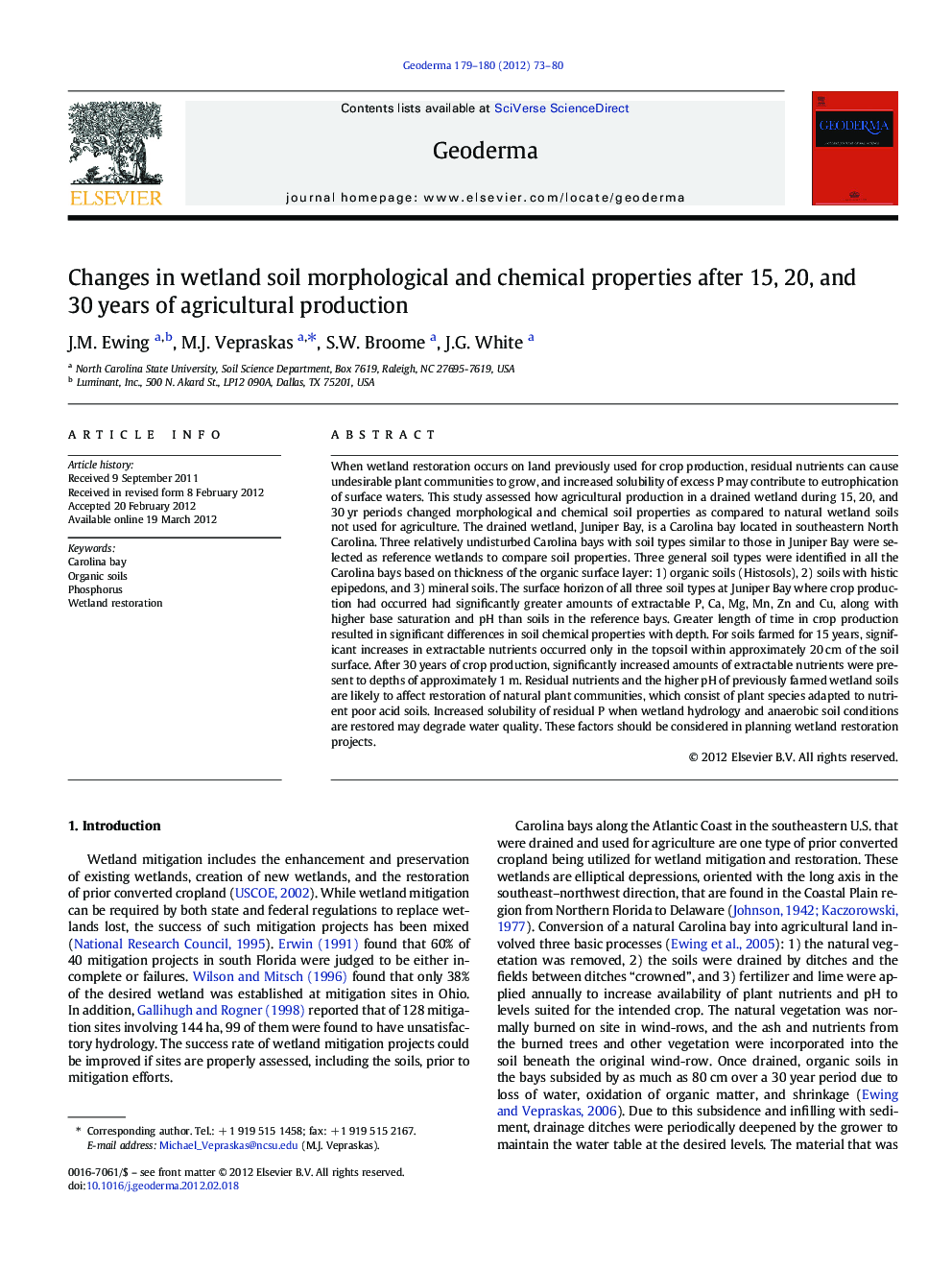| کد مقاله | کد نشریه | سال انتشار | مقاله انگلیسی | نسخه تمام متن |
|---|---|---|---|---|
| 4573858 | 1629498 | 2012 | 8 صفحه PDF | دانلود رایگان |

When wetland restoration occurs on land previously used for crop production, residual nutrients can cause undesirable plant communities to grow, and increased solubility of excess P may contribute to eutrophication of surface waters. This study assessed how agricultural production in a drained wetland during 15, 20, and 30 yr periods changed morphological and chemical soil properties as compared to natural wetland soils not used for agriculture. The drained wetland, Juniper Bay, is a Carolina bay located in southeastern North Carolina. Three relatively undisturbed Carolina bays with soil types similar to those in Juniper Bay were selected as reference wetlands to compare soil properties. Three general soil types were identified in all the Carolina bays based on thickness of the organic surface layer: 1) organic soils (Histosols), 2) soils with histic epipedons, and 3) mineral soils. The surface horizon of all three soil types at Juniper Bay where crop production had occurred had significantly greater amounts of extractable P, Ca, Mg, Mn, Zn and Cu, along with higher base saturation and pH than soils in the reference bays. Greater length of time in crop production resulted in significant differences in soil chemical properties with depth. For soils farmed for 15 years, significant increases in extractable nutrients occurred only in the topsoil within approximately 20 cm of the soil surface. After 30 years of crop production, significantly increased amounts of extractable nutrients were present to depths of approximately 1 m. Residual nutrients and the higher pH of previously farmed wetland soils are likely to affect restoration of natural plant communities, which consist of plant species adapted to nutrient poor acid soils. Increased solubility of residual P when wetland hydrology and anaerobic soil conditions are restored may degrade water quality. These factors should be considered in planning wetland restoration projects.
► Surface horizons of farmed soils had 3x more P than soils than in natural wetlands.
► After 15 years, nutrients in farmed soils had increased to a depth of 20 cm.
► After 30 years, nutrients in farmed soils had increased to depths of 1 m.
► Excess nutrients make wetland restoration of natural plant communities difficult.
► Restoration of farmed wetlands may degrade water quality by solubilizing P.
Journal: Geoderma - Volumes 179–180, June 2012, Pages 73–80